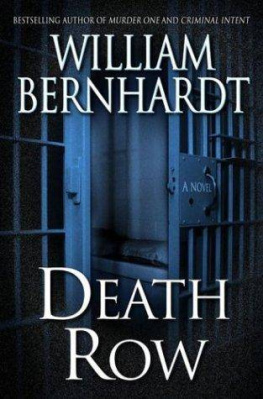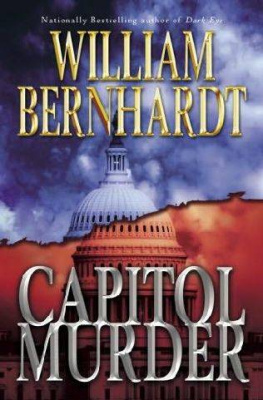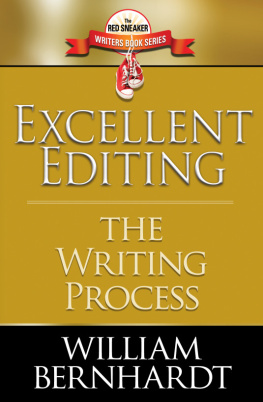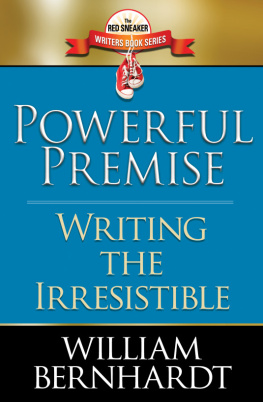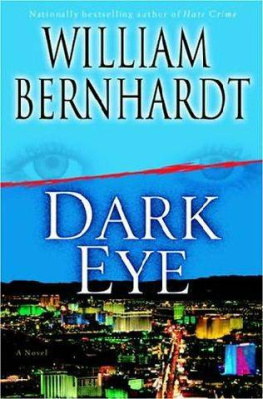Story Structure
The Key to Successful Fictio n
Story Struct ure: The Key to Successful Fiction
First Edition
Copyright 2013 William Bernhardt Writing Programs
Published by the Red Sneaker Press
An imprint of Babylon Books
All rights reserved
The author wishes to thank Ralph Bernhardt for creating the computer-generated illustrations used in this book.
No part of this book may be reproduced, scanned, or distributed in any printed or electronic form without permission. Please do not participate in or encourage piracy of copyrighted materials in violation of the authors rights. Purchase only authorized editions.
Story Structure
The Key to Successful Fiction
William Bernhardt
The Red Sneaker Writer Series

Other Books by William Bernhardt
Red Sneaker Writer Series
Story Structure: The Key to Successful Fiction
Creating Character: Bringing Your Story to Life
Perfect Plotting: Charting the Course
The Fundamentals of Fiction (DVD)
The Ben Kincaid Series
Primary Justice
Blind Justice
Deadly Justice
Perfect Justice
Cruel Justice
Naked Justice
Extreme Justice
Dark Justice
Silent Justice
Murder One
Criminal Intent
Hate Crime
Death Row
Capitol Murder
Capitol Threat
Capitol Conspiracy
Capitol Offense
Capitol Betrayal
Other Novels
The Code of Buddyhood
Paladins of the Abyss
Double Jeopardy
The Midnight Before Christmas
Final Round
Dark Eye
Strip Search
Nemesis: The Final Case of Eliot Ness
The Idea Man
The Game Master
Shine
For Young Readers
Equal Justice: The Courage of Ada Lois Sipuel
Princess Alice and the Dreadful Dragon
The Black Sentry
Edited by William Bernhardt
Legal Briefs
Natural Suspect
Dedicated to all t he Red Sneaker Writers:
You cant fail unless you quit.
Writing is s tructure.
William Goldman
TABLE OF CONTENTS
INTRODUCTION
We lcome to the world of the Red Sneaker Writers. If youre familiar with this outfit or youve read other Red Sneaker publications or attended Red Sneaker events, you can skip to Chapter One. If youre new, let me take a moment to explain.
Ive been writing a long time, and Ive been speaking at writing workshops and conferences almost as long. Every year I see the same tableau staring back at me from the audience: long rows of talented people, most of whom have attended many conferences, frustrated by the fact that they cant sell a book. And wondering why. Yes, the market is tough and agents are hard to find yadda yadda yadda whine whine. But for those aspiring writers who do the work and put it out there but still arent publishingtheres usually a reason. Too often enormous potential is lost because writers dont understand the fundamentals of storytelling. Sometimes a little vigorous instruction is all that stands between an unpublished writer and a satisfying writing career.
I always did my best to help out at confer ences, but the large auditorium/general information lecture is not terribly conducive to writing instruction. And sometimes what I heard other instructors saying at conferences I thought singularly unhelpful. Too often people seemed more interested in obfuscating writing than explaining it. Sometimes I felt speakers were determined to make writing as mysterious and incomprehensible as possible, either because that made the speaker sound like deeper and more literary, or because they didnt fully grasp the subject themselves. How could that help anyone get published?
After giving this problem some thought, I formulated the Red Sneaker Road to Writing. Why Red Sneakers? Because I love my red sneakers. Because theyre practical, flexible, sturdyand bursting with style and flair. In other words, exactly what I think writing instruction should be. Practical and flexible and useful, but still designed to unleash the creative spirit, to give the imagination a platform for creating wondrous work.
I started reaching out to other Red Sneake r writers with an annual conference. I invited the best teachers I knew, not only people who had published many books but people who knew how to share what they had learned over the years. Then I launched my small group seminarsfive intensive days with a handful of aspiring writers. This gave me the opportunity to read, edit, and work one-on-one with individuals so I could target their needs and make sure they got whatever would help them most. This approach worked extremely well and Im proud to say a substantial list of writers have graduated from my seminars and published work with major publishers. But not everyone is able to fly wherever I am to attend a seminar, and I couldnt justify traveling from home to work with one or two writers. What to do?
This book, and the other books in the Red Sneaker book series, are designed to address that problem. Short inexpensive books providing writers with the help they need. Let me see if I can anticipate your questions:
Why are these books so short? Ive tried to expunge the unnecessary. Im paring it down to the essential information, practical and useful tips that can improve your writing. Too many educational books are padded to fill word counts. Thats not the Red Sneaker way.
Why so many different books instead of one big book? So people can find the information they need without losing a lot of writing time (though if you want to buy all the Red Sneaker books, knock yourself out). Each of these books can be read in a single afternoon. Take a day off from your writing schedule and read the book. Make notes in the margins. See if that doesnt trigger ideas for your own work. I bet it will. And then the next day, you can return to your writing schedule.
Why does each chapter end with exercises? Is this just padding? No. The exercises are a completely integrated and essential part of this book. Samuel Johnson was correct when he wrote: Scribendo disces scribere. Meaning: You learn to write by writing. I can gab on and on in my erudite and incredibly intelligent way, but you wont really learn any of this until you put it into practice. So dont get in such a hurry that you dont get the full benefit out of this book. Take the time to complete the assignments, not only because it may improve your next effort, but also because it will help concretize these ideas in you brain. Ive also included a short summary at the end of each chapter, so you can review what youve learned at a later date.
I also send out a free monthly newsletter, filled with writing advice and market analysis and other items of interest to Red Sneaker Writers. If youd like to be added to the mailing list, sign up at my website: www.williambernhardt.com . You may also be interested in my DVD set, The Fundamentals of Fiction , also available on my website. Its about five hours of me talking about writing. Who doesnt want that?
Okay, enough of this warm-up act. Read this book. Then write something wonderful.
William Bernhardt
CHAPTER 1: WHAT IS STRUCTURE?
And as imagination bodies forth the forms of things unknown, the poet's pen turns them to shapes, and gives to airy nothings a local habitation and a name.
William Shakespeare
Structure is one of the most important concepts for a writer to understandand ironically, one of the least frequently taught. I have attended many writing conferences during my three decades as a professional writer, but the only time Ive ever heard anyone lecturing on structure was when I was doing it myself.




